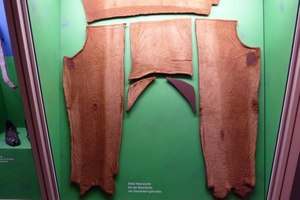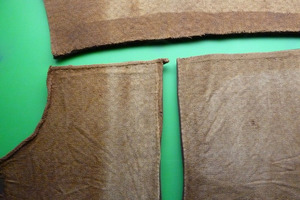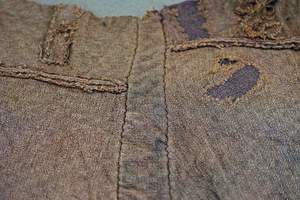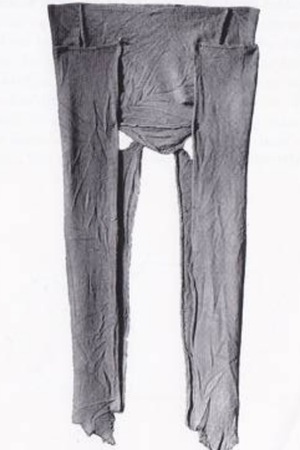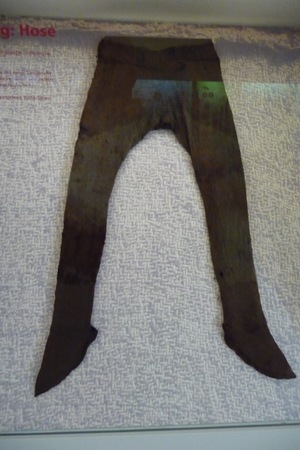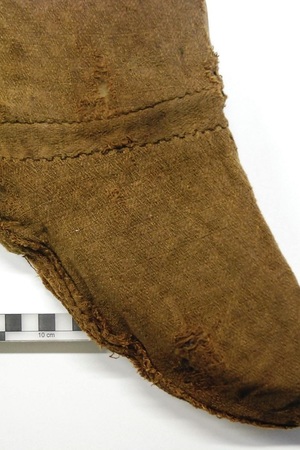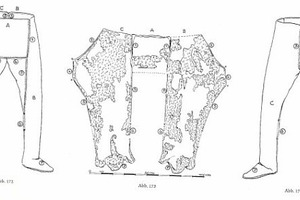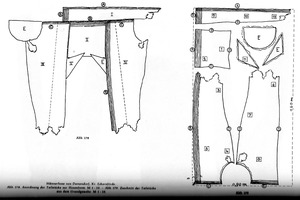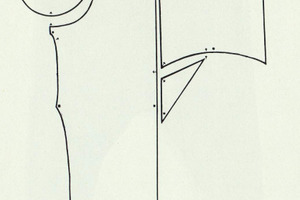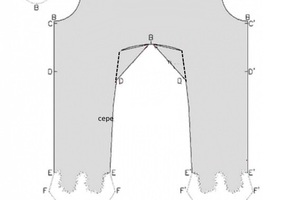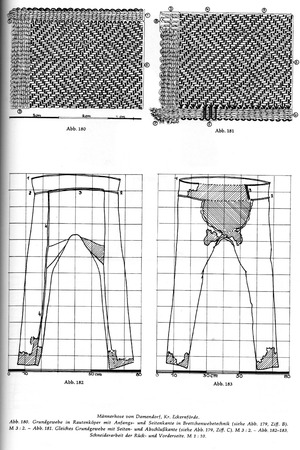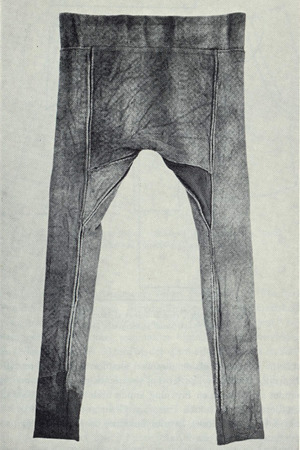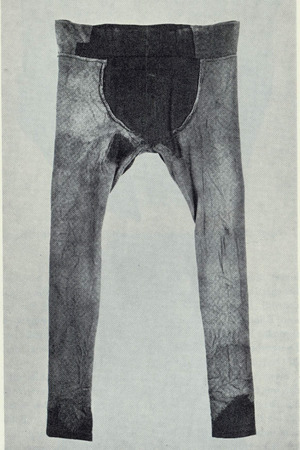Celtic Trousers
In contrast to the Greeks and Romans, trousers were one of the most important elements of Celtic clothing. They were typically complex garments, consisting of a significant number of pieces, and were made of wool.
Like many other fabric items, not many trousers have been found. They have varying constructions and corresponding patterns. They were held up by a waistband. There are two notable findings - Torrsberg and Damendorf, with the latter being closer in dating to Celts: 1st to 2nd centuries CE. Both findings feature twill-woven wool trousers.
The trousers from Damendorf consist of seven parts: two legs, a waistband, two lower groin pieces, one front, and one back. The main challenge in reconstruction lies in taking measurements and creating the pattern. The trousers should fit snugly on the wearer, so one could simplify the process by taking measurements from their own tight-fitting modern trousers. The most intricate part is the groin area, as it determines the comfort and durability of the trousers.
In Torrsberg, two pairs of trousers were found. The first pair has a relatively independent pattern, while the second pair is closer to the Damendorf finding. The main difference is the absence of the oval piece in the front, with the legs partially sewn together.
Related topics

 Gallery
Gallery






